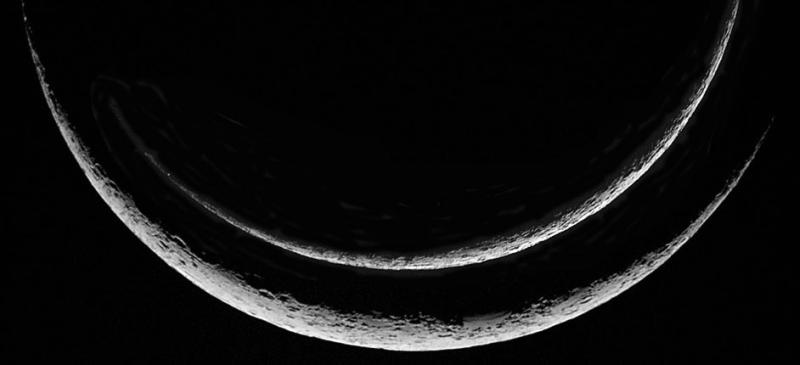Finding Your Way on a Very Young Moon

Explanation:
Observing the Moon when its is only 1 to 3 days old is difficult. It's always low in the western sky, lying on it's side, often tremulous with seeing, and such a slim sliver that few features can be identified. As aids for future crescent crawls I have identified a few features on these two good images by Stefan Seip. The top image is of a 40.5 hour - 1.7 days - old Moon; the bottom Moon is 55 hrs - 2.3 days - old. One feature that is often seen during days 1-3 is a roughly N-S ridge east of Mare Crisium. And notice how much the Moon's position angle has shifted in the one month and two days between these two exposures. On the bottom image the equator passes just about across the lowest part of the image. On the top image the equator is considerably further to the right. Identifying where you are on a slender crescent requires determining the orientation of the Moon. In both of these there is not a good libration in longitude so some of the distince (smooth and flat in profile) maria (such as Marginis) are not not visible. Good luck in getting such clear views as these and figuring out where you are!
—
Chuck Wood
Technical Details:
Top image: Jun 1, 2003 / 19:51 UT; Astrophysics Starfire 130mm f/8; SBIG ST-2000XM, 0.1 seconds exposure, dark- and flatframes applied; processed with AstroArt 2.0, Adobe PhotoShop.
Bottom image: May 3, 2003 / 19:11 UT;Astro-Physics 155mm f/7; SBIG ST-2000XM, 0.4 seconds exposure, Astronomiks H-alpha filter 15nm for light reduction; dark- and flatframe corrected; processed with AstroArt 2.0, Adobe PhotoShop.
Related Links:
Stefan's Astro Meeting
